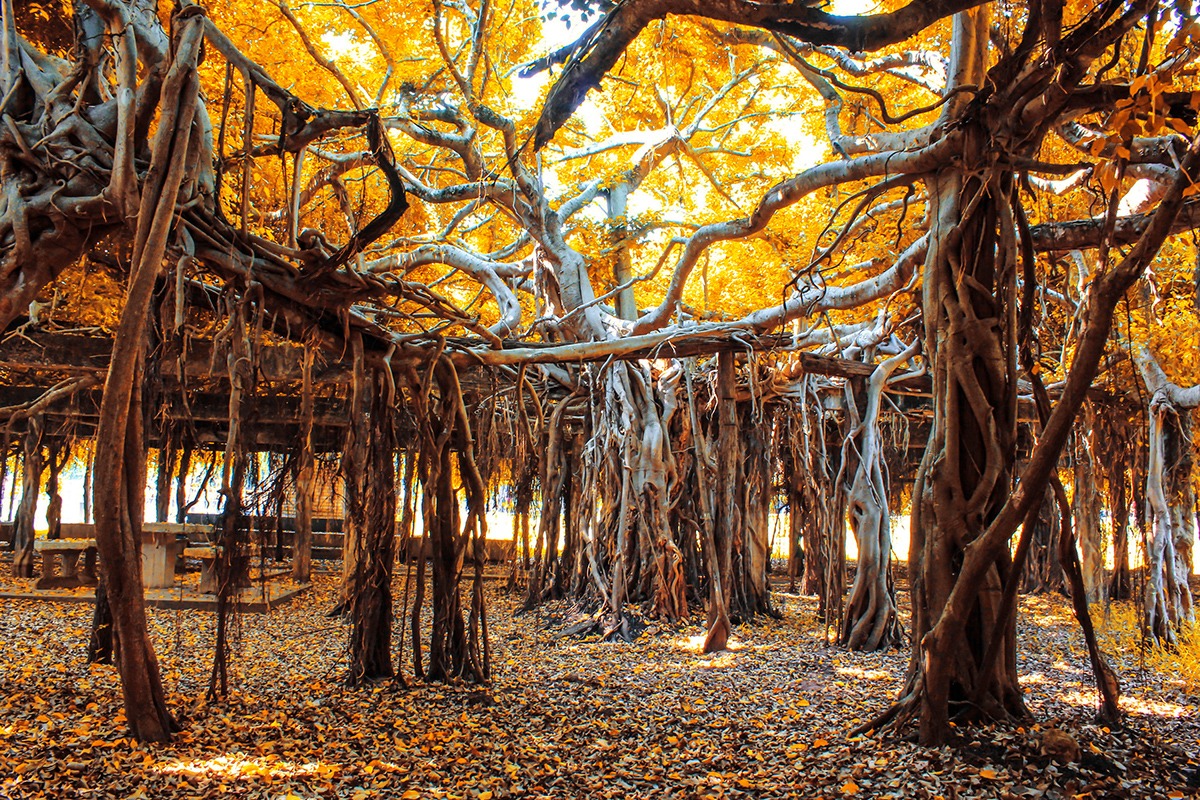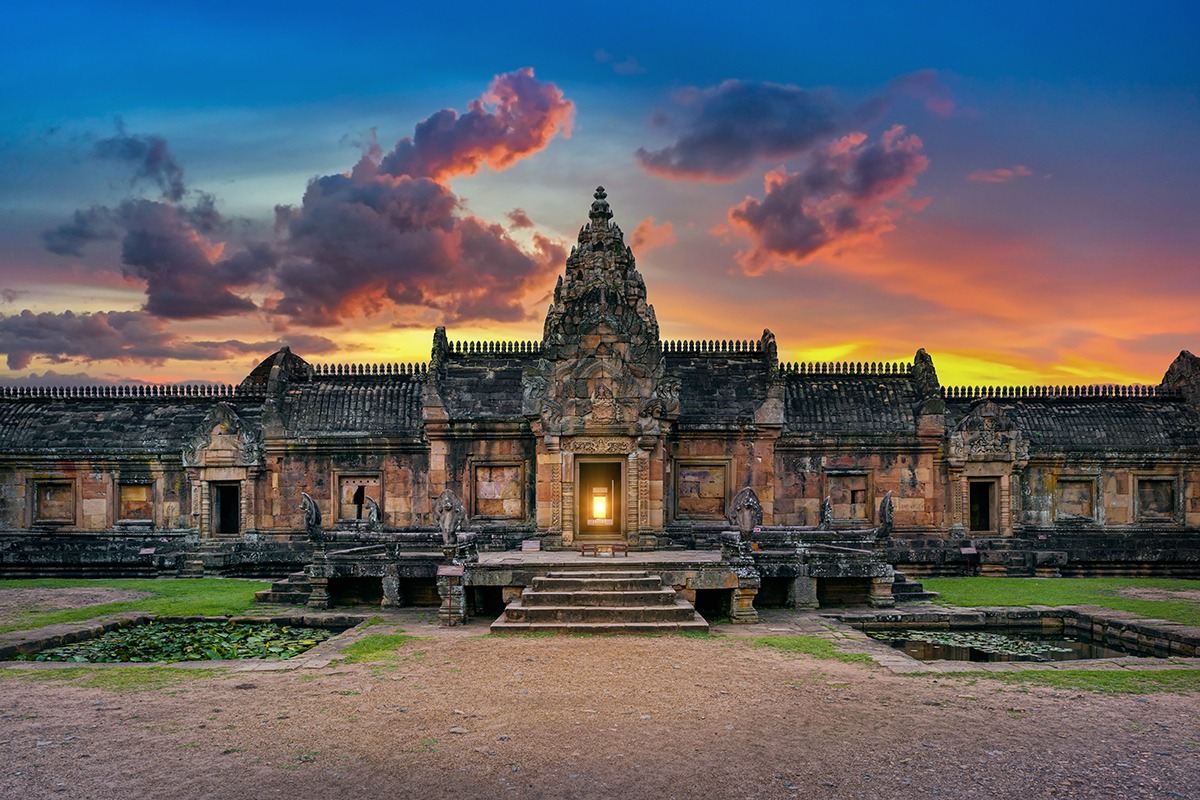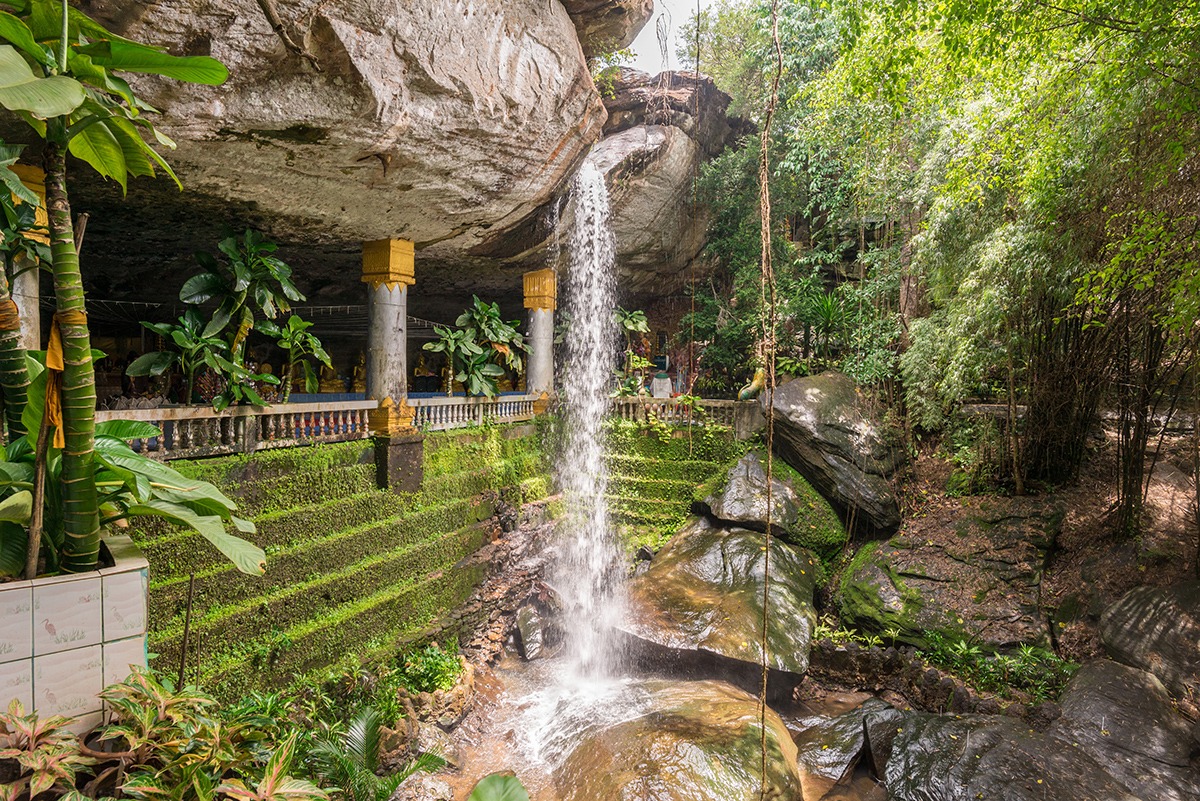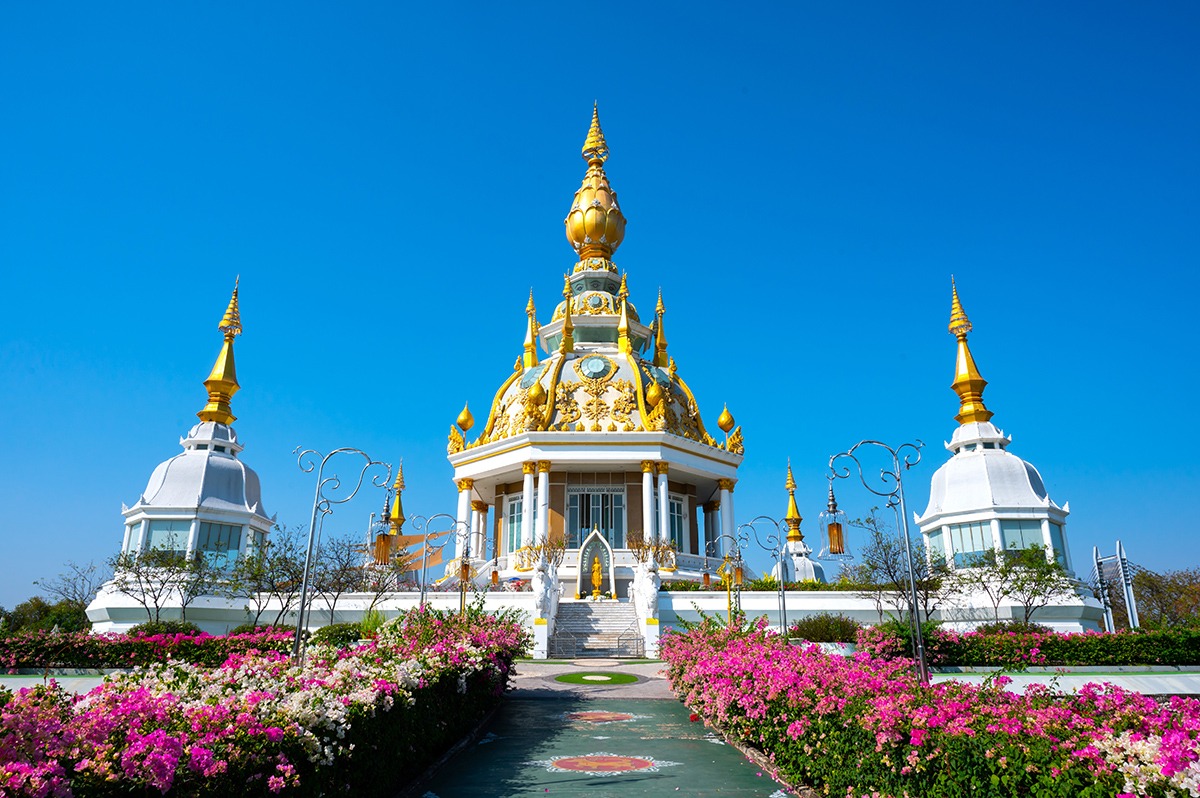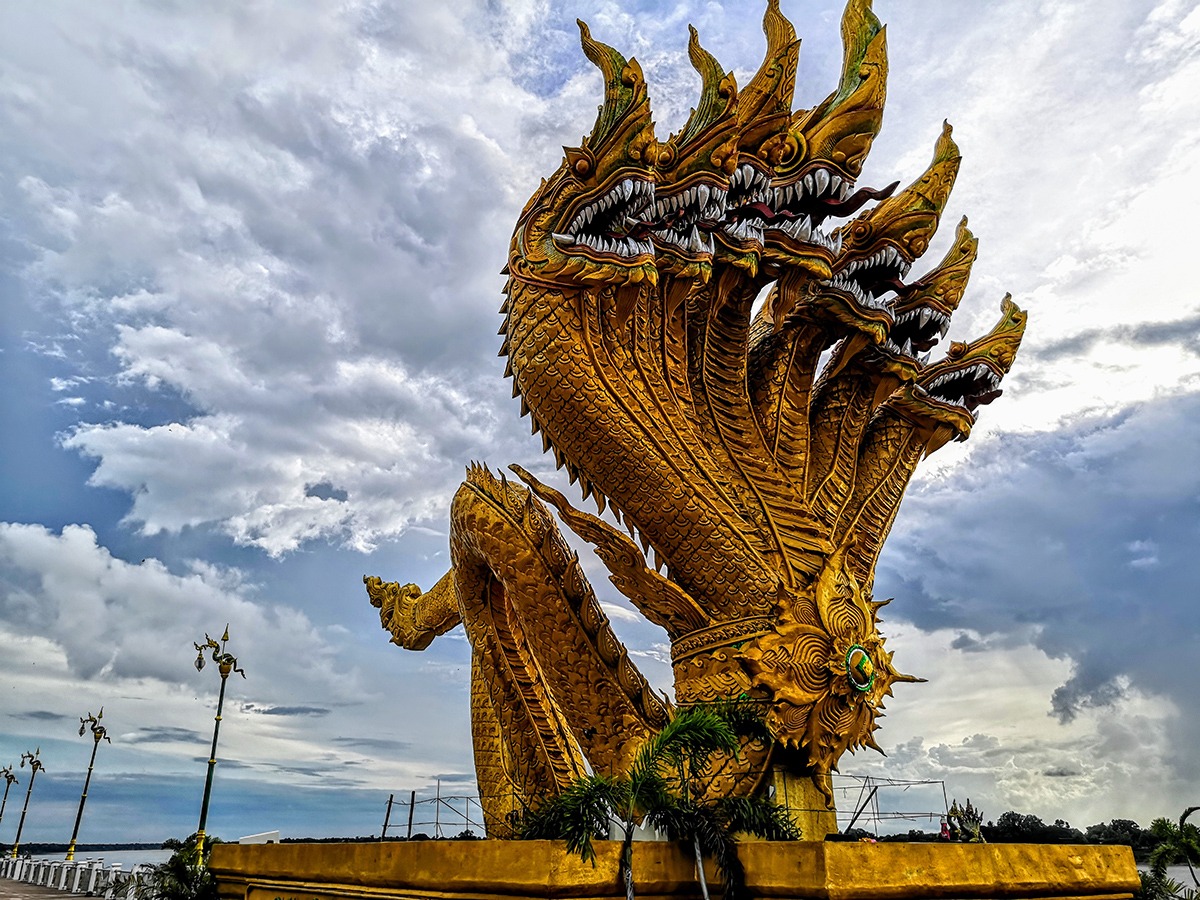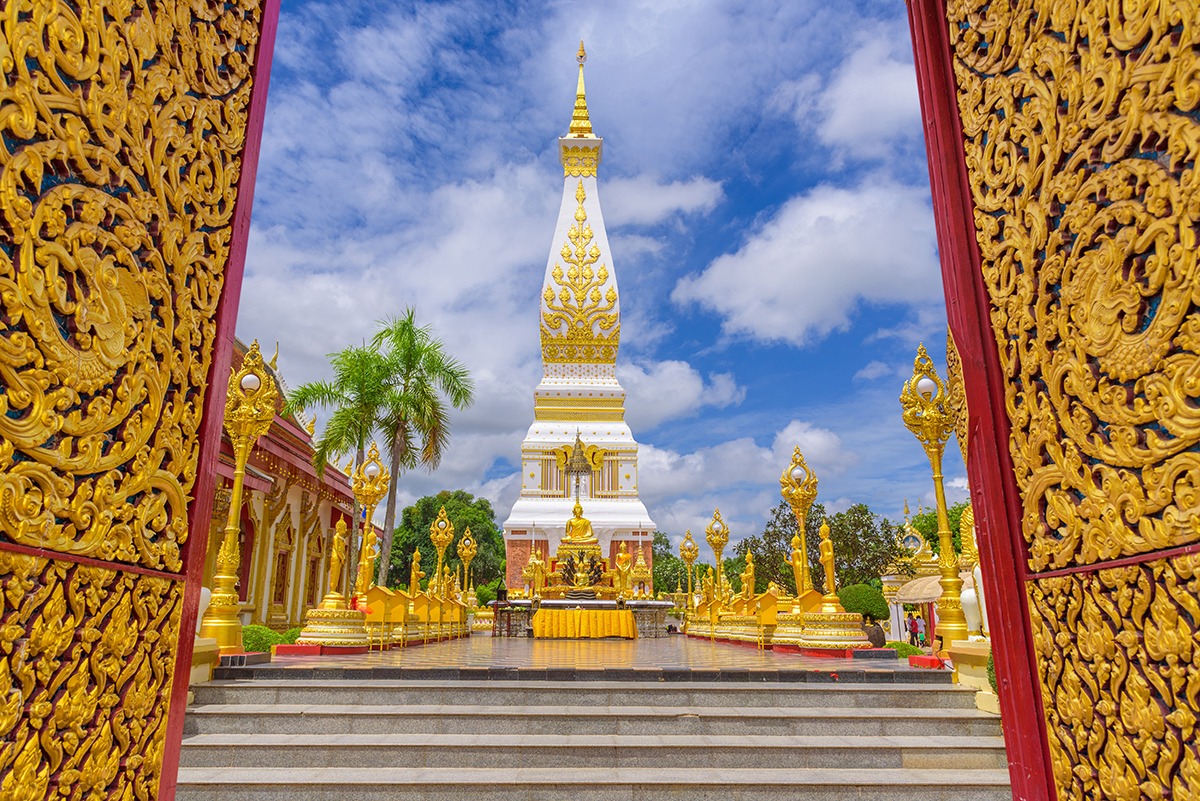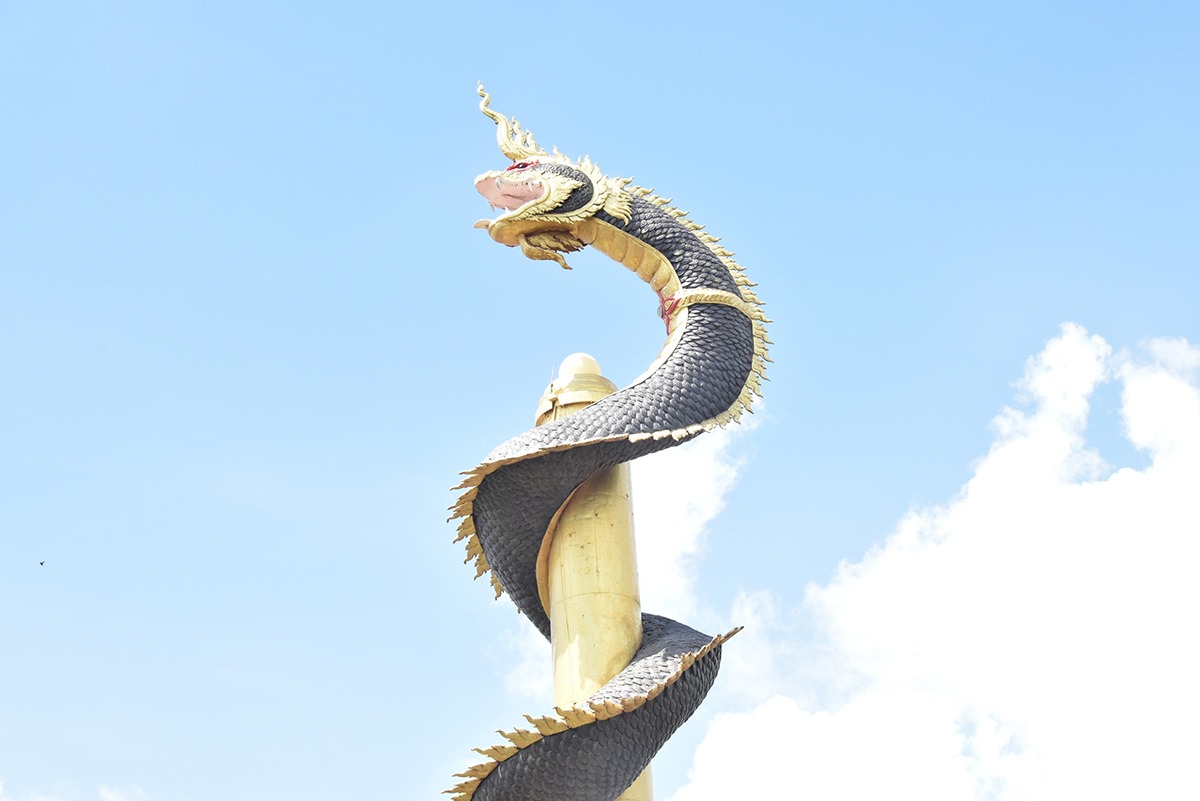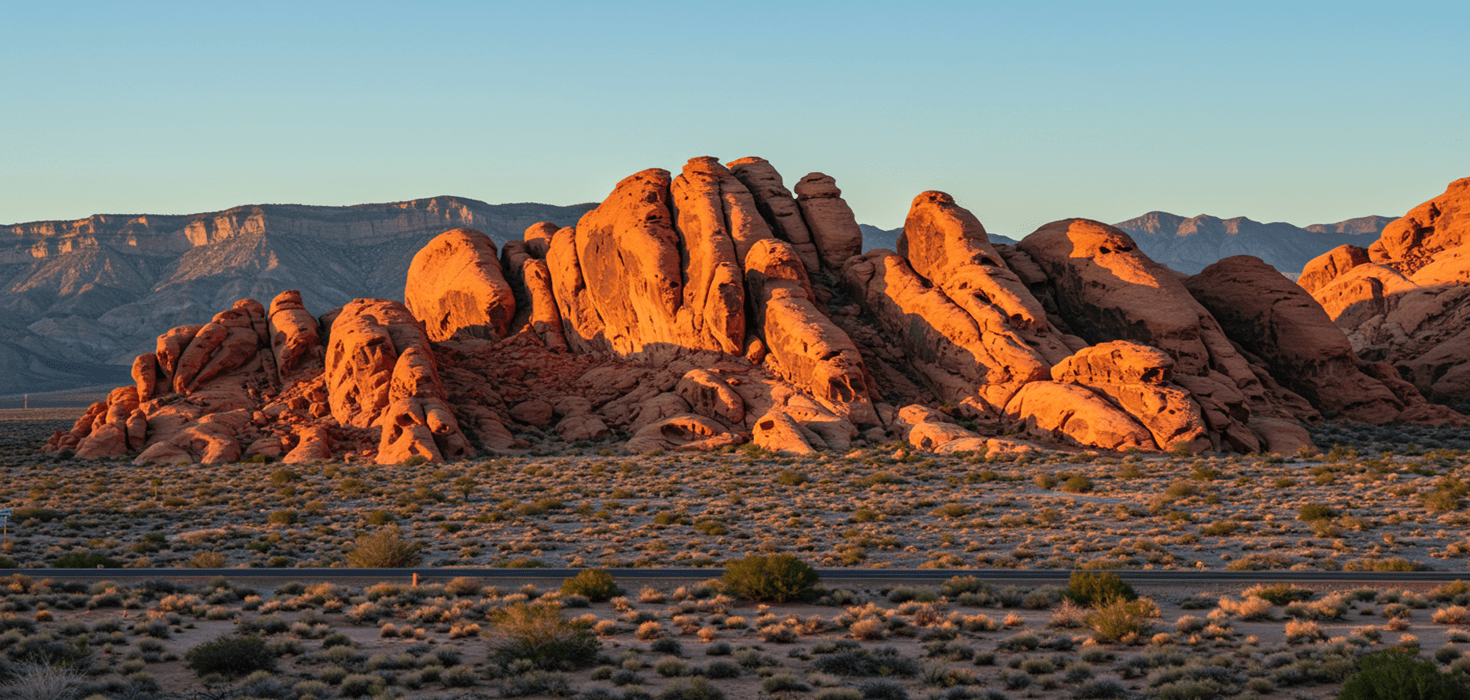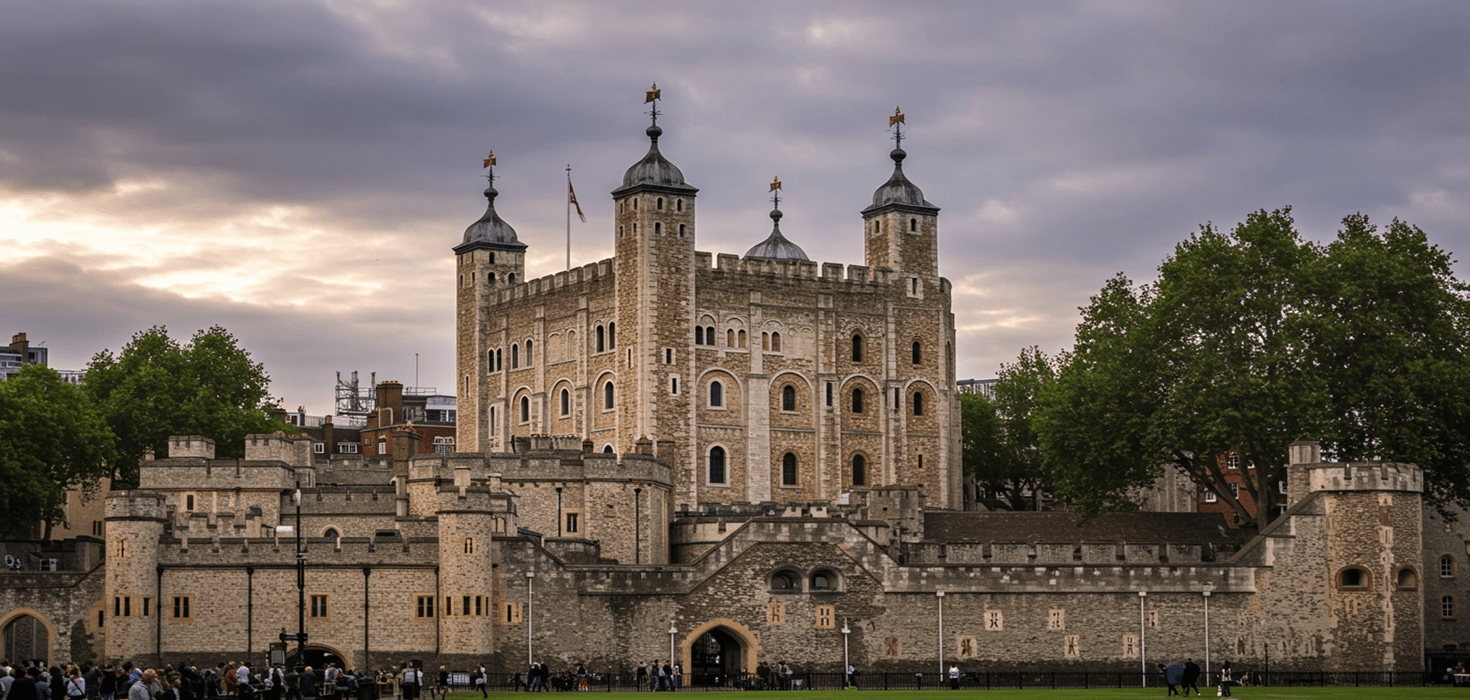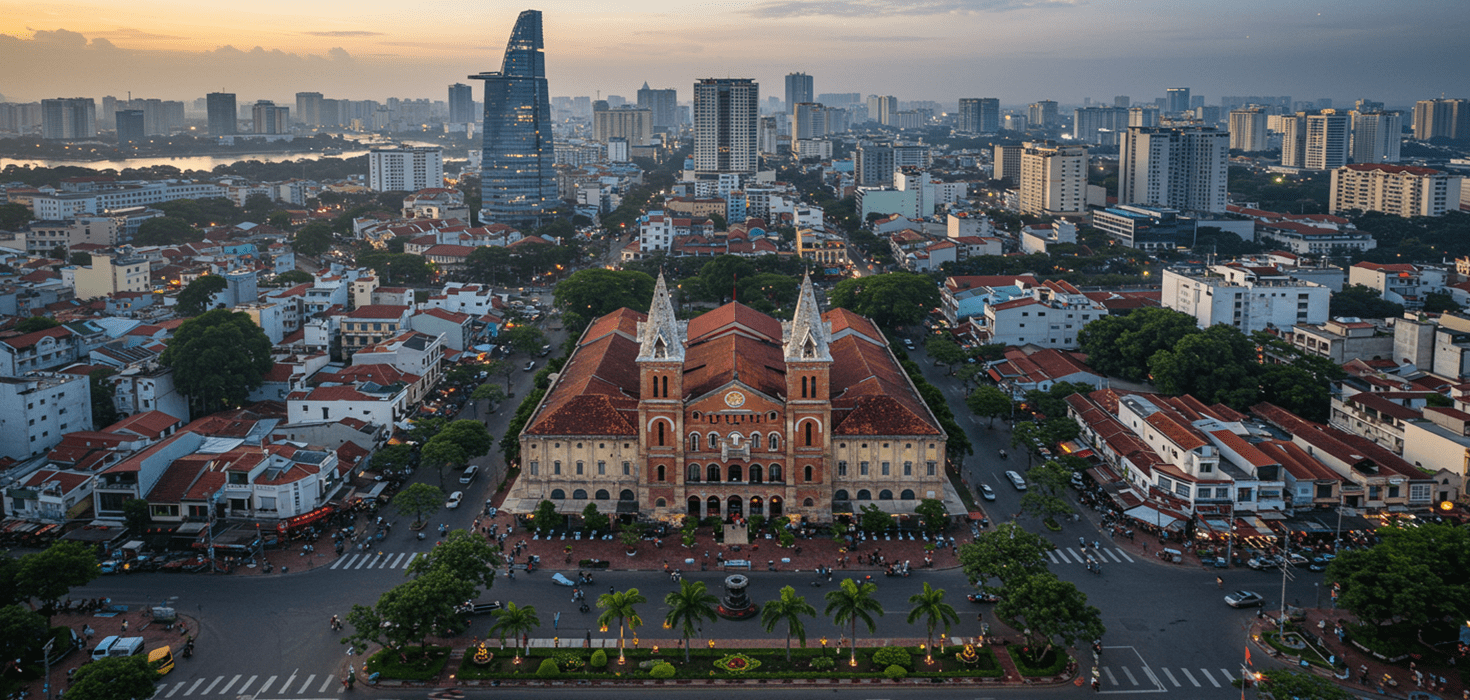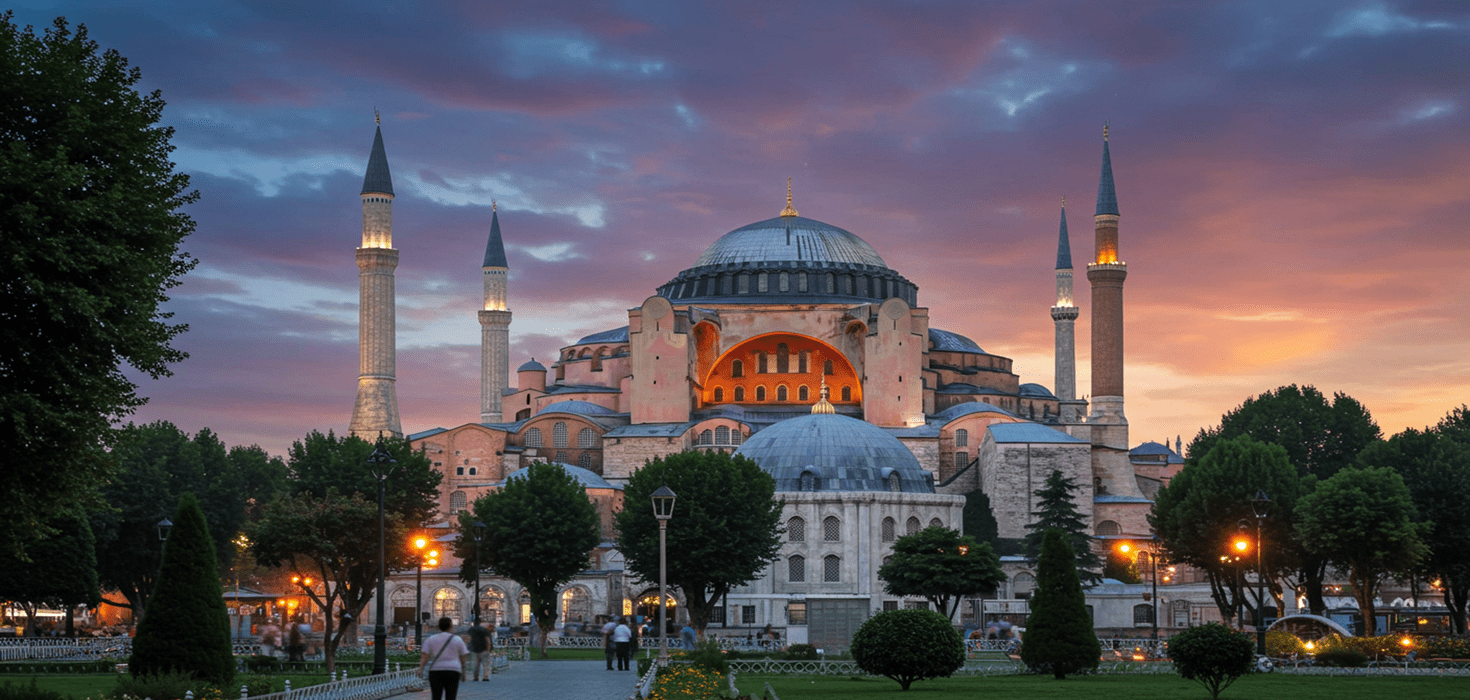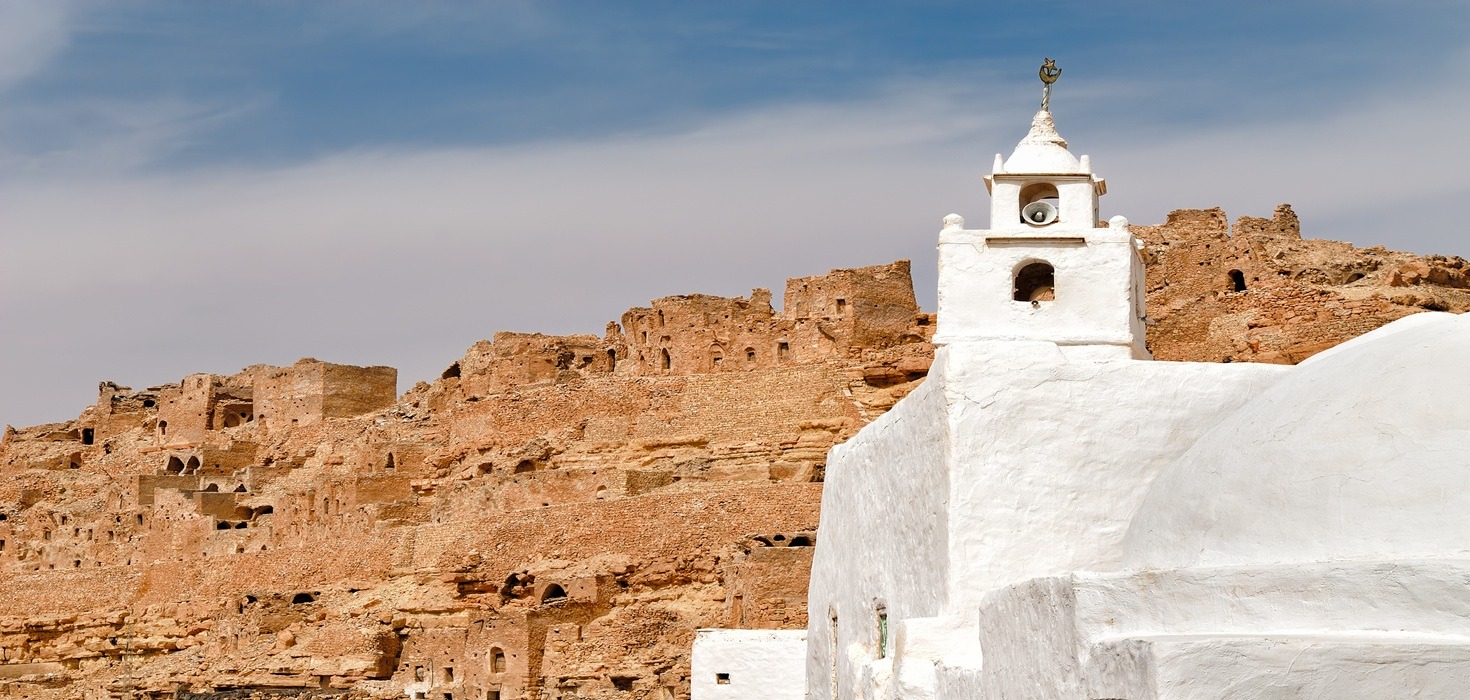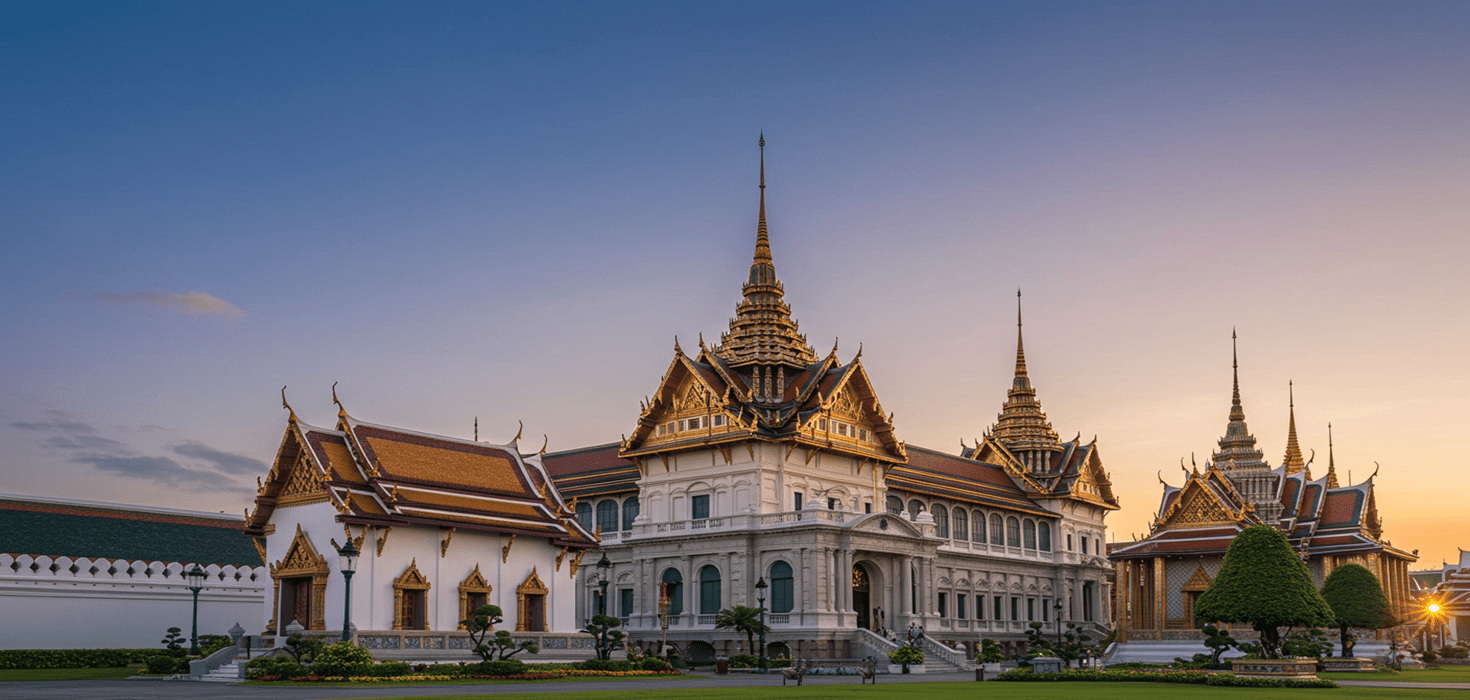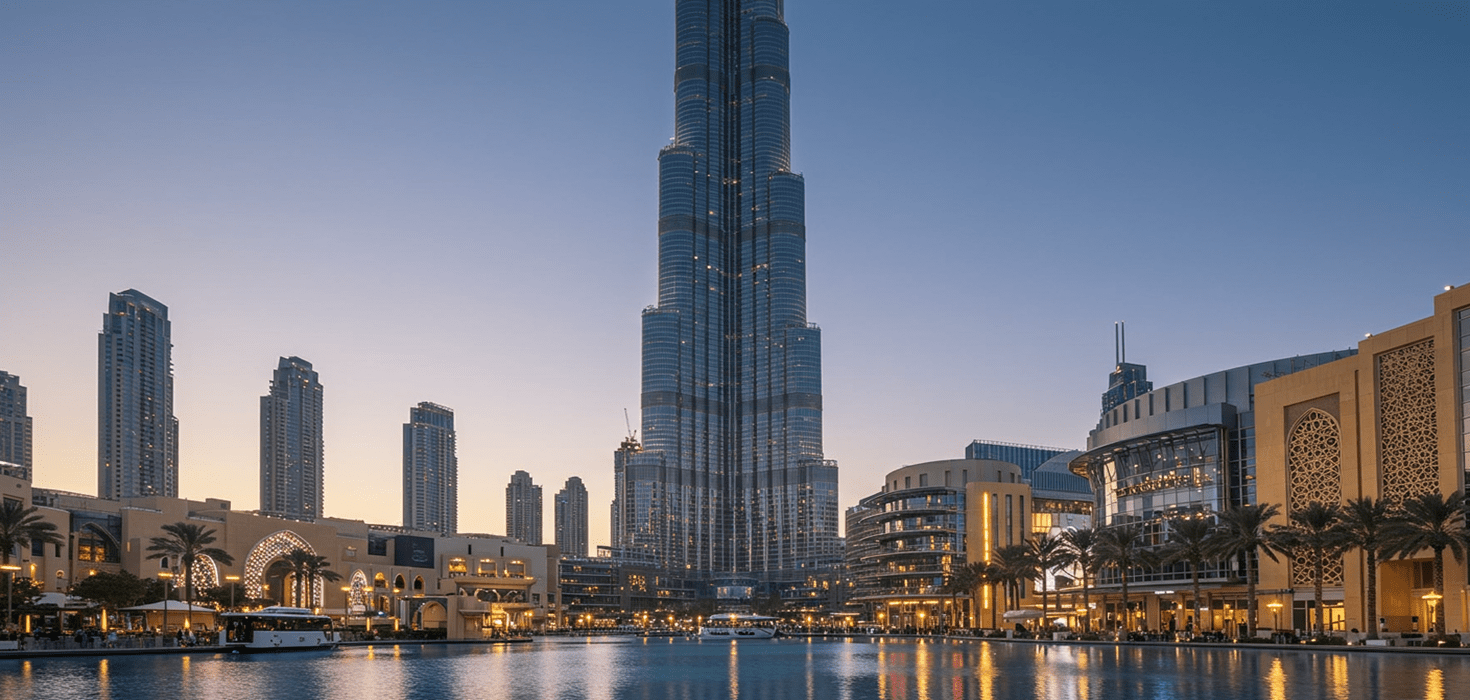Northeast Thailand is a region brimming with cultural wealth, historical significance, and spiritual sanctuaries. Away from the mainstream tourist trails, this region harbors some of the most captivating temples and shrines in spiritual Thailand, each narrating its unique lore, architectural marvel, and spiritual solace. From the majestic heights of Prasat Phanom Rung atop an extinct volcano to the serene depths of the cave temple at Wat Tham Heo Sin Chai, there are endless marvels to discover. If you’re wondering where to go in Northeast Thailand, these eight must-visit temples promise an enriching experience for all travelers, whether you are a pilgrim, a history enthusiast, or simply in search of peace.
Check out the free “Connecting to Spiritual Thailand: A Guide to 60 Powerspots” e-book, developed by Palotai Design, to learn all about the unique history and importance behind some of Thailand’s most spiritual places.
Sai Ngam (Nakhon Ratchasima)
Sai Ngam is a serene and spiritually charged grove in Nakhon Ratchasima just outside of central Phimai. It offers a unique temple experience, centered around an awe-inspiring, 400-year-old Banyan tree complex. This natural sanctuary, with its vast network of intertwined roots and branches, creates an atmosphere of peace and introspection. It covers an area roughly half the size of a football field. Visitors often come here to meditate, enjoy the cool shade, and partake in the local practice of tying colorful ribbons around the trees or offering incense sticks as a form of making merit or wishing for good fortune.
The significance of Sai Ngam extends beyond its natural beauty to embody the deep connection between Thai culture and nature. Locals hold the site in high regard, often visiting to perform rituals and pay respects to the spirits believed to reside within the ancient banyan. The grove serves not only as a spiritual retreat but also as a cultural landmark, where traditional beliefs and practices are preserved and passed down through generations. The gentle rustle of leaves and the quiet ambiance provide a perfect backdrop for personal reflection in one of the best temples in Northeast Thailand.
Prasat Phanom Rung (Buriram)
Prasat Phanom Rung stands majestically atop an extinct volcano in Buriram, a testament to the architectural genius of the ancient Khmer empire. This 900-year-old temple is one of the most famous temples in Northeast Thailand and was originally dedicated to the Hindu god Shiva. It boasts some of the most exquisite sandstone carvings and laterite structures in the country, with the precision of the stonework showcasing the artisans’ skill and the spiritual devotion of its builders. The ascent to the temple via a dramatic causeway, flanked by serpent railings, symbolizes a journey from the earthly realm to the divine, culminating in the breathtaking view from the sanctuary’s summit.
The annual light phenomenon at Prasat Phanom Rung is a spectacle that draws crowds, as the rising or setting sun aligns perfectly with the sanctuary doorways four times a year, creating a mystical pathway of light. The sunrise alignment occurs in early April and September, while the sunset alignment occurs in early March and October. This event, along with the temple’s architectural splendor, underscores the site’s astronomical and spiritual importance. Beyond its physical beauty, Prasat Phanom Rung is a place of lore and legend, where the layers of history, religion, and astronomy intertwine.
Wat Tham Heo Sin Chai (Ubon Ratchathani)
Wat Tham Heo Sin Chai, hidden within the tranquil landscapes of Ubon Ratchathani, is more than a cave temple–it is one of the most tranquil spiritual places in Northeast Thailand. The cave, set within a lush forest and accessible through a winding path, reveals a world of natural wonders and Buddhist devotion. The temple was established 50 years ago by a monk named Luang Phu Khamla with the help of local villagers. A cooling waterfall that flows down in front of the shallow cave creates an ideal meditative setting.
Located on the outskirts of Khong Chiam, this temple serves as a spiritual haven for monks who practice meditation and for visitors seeking a moment of peace away from the outer world. The presence of a small monastic community adds to the sense of serenity and dedication that permeates the site. The temple is supported and cherished by locals, who come to offer food and flowers, especially on Buddhist holy days. They have even built a statue to its founding monk, which sits protected by a seven-headed snake. Exploring Wat Tham Heo Sin Chai is a wonderful way to feel connected to more local spiritual Thailand practice.
Wat Thung Setthi (Khon Kaen)
Wat Thung Setthi, erected in 2012 in Khon Kaen, Thailand, has quickly become one of the top temples to visit in Northeast Thailand. It stands as a contemporary marvel of Buddhist architecture, blending traditional Thai design with modern aesthetics. This relatively new temple has already become renowned for its exquisite craftsmanship and intricate details, which are evident in every corner of the complex. The temple’s main pagoda enshrines tooth relics of the Buddha and houses a beautiful black and gold statue of Buddha in serene meditation underneath the sky-blue dome. Visitors may offer flowers to the statue.
The grounds of Wat Thung Setthi are just as beautifully designed. The central pagoda is guarded by a moat and bronze statues that honor the four cardinal directions. It is believed that this is the point where heaven, hell, and earth meet. Wat Thung Setthi is not just a place of worship; it is a testament to the enduring relevance of Buddhism in contemporary Thai society, showcasing how this ancient religion can be harmoniously integrated with modern life.
Tham Erawan (Nong Bua Lamphu)
Tham Erawan, nestled in the province of Nong Bua Lamphu off Highway 210, is another captivating cave temple that offers a unique blend of natural splendor and spiritual tranquility. It is marked by a karst tower formation that is said to mimic a kneeling elephant identified with the mythical three-headed elephant king, Erawan. At the foot of this natural monument, Tham Erawan greets visitors with an impressive gateway framed by two white elephants lifting a Buddha statue with their trunks. This is one of the best temples in Northeast Thailand for those seeking inspiration from both the spiritual and natural world.
Within the temple, worshippers pay homage with garlands at altars dedicated to Erawan, offering bamboo stalks for the mythical elephant to consume. A climb of six hundred steps leads to a majestic golden Buddha at the cave’s entrance, offering a panoramic view over rice fields dotted with lush hills. Further exploration reveals an interior rich with stalactites and stalagmites, illuminated by light filtering through three ceiling apertures. A formation resembling an elephant, draped in red cloth and adorned with garlands, stands out, capturing the essence of the cave’s mythological and natural wonder.
Wat Thai Phon Phisai (Nong Khai)
Wat Thai Phon Phisai is one of the most unique temples to visit in Northeast Thailand. Located in the tranquil province of Nong Khai, Thailand, and situated on the banks of the Mekong River, it is a site enveloped in mystery and spiritual allure. It is particularly known for the enigmatic phenomenon of the Naga fireballs. The phenomenon, where glowing orbs spontaneously rise into the air from the river, has been attributed by local folklore to the mythical Naga serpent, believed to dwell in the waters. It is said that the fireballs are meant to call the Buddha back to earth from Heaven. The temple’s abbot even built a 19-meter-tall statue to honor the enigmatic serpent.
The Naga fireballs are most prominently observed during the full moon in October from the temple’s riverbank promenade. The rest of Wat Thai Phon Phisai, with its serene environment and traditional Lao-style architecture, serves as a year-round spiritual. Its association with the Naga fireballs adds a layer of mystique to its spiritual significance, making it a convergence point for faith, folklore, and natural wonder in the heart of Northeast Thailand.
Wat Phra That Phanom (Nakhon Phanom)
Another one of the most famous temples in Northeast Thailand, Wat Phra That Phanom is a beacon of faith and history in Nakhon Phanom, home to one of the most sacred Buddhist relics in Thailand. According to legend, the temple’s towering chedi houses the Buddha’s breastbone. The chedi, with its elegant Lao-style design, dominates the landscape, drawing pilgrims and visitors from far and wide. The temple complex is adorned with beautiful murals, statues, and smaller stupas, each contributing to the sacred atmosphere and telling stories of the Buddha’s teachings and the temple’s storied past.
The annual festival honoring the relic, between the harvesting and sowing of rice, is always a time of joyous celebration. During the festival, Wat Phra That Phanom becomes a focal point for religious ceremonies, cultural performances, and communal gatherings, highlighting the temple’s role in preserving and promoting Isaan’s spiritual and cultural heritage. Visitors to the temple are invited to participate in rituals, offering flowers, incense, and prayers, and to experience the deep sense of peace and belonging that pervades this holy site. The experience of visiting Wat Phra That Phanom is not just about witnessing the beauty and grandeur of the temple; it’s about connecting with a living tradition.
Phaya Anantanakharat Shrine (Mukdahan)
Phaya Anantanakharat Shrine in Mukdahan stands as an emblem of spiritual Thailand and as a sign of cultural and spiritual synthesis at the border of Thailand and Laos, near the Thai-Lao Friendship Bridge that connects the two nations. This shrine, dedicated to the serpent king, is deeply rooted in the mythological tapestry that intertwines Hindu and Buddhist traditions, symbolizing unity and protection for the people and lands it oversees. The great serpent is depicted here in a giant Naga statue with black scales and gold fins wrapped around a golden pillar.
The shrine itself, with its intricate designs and serene ambiance, serves as a beacon for pilgrims and travelers from both countries, embodying a shared heritage that transcends geopolitical boundaries. It is not just a place of worship but also a testament to the enduring bonds between Thailand and Laos, reflected in the shared beliefs and rituals that flourish here. Visitors come to Phaya Anantanakharat Shrine with offerings of water, betel nuts, or lotus flowers for a safe journey.


